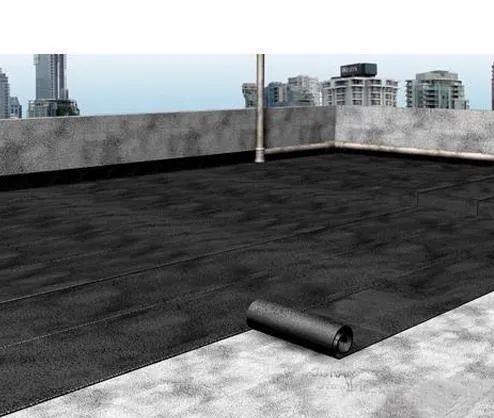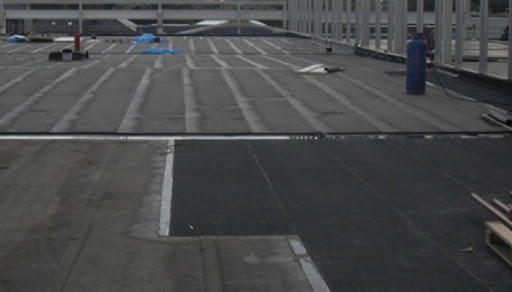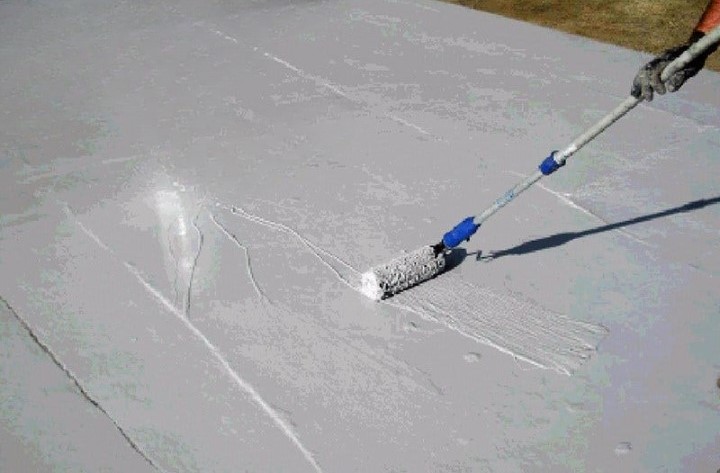A recent tweet from Ripudaman, a 22-year-old civil engineer, has sparked significant discussions about construction quality in Newtown, Kolkata. His alarming post about water leakage in his Rs 1.5 crore apartment on the fifth floor of a high-rise building has gone viral, raising critical questions about the integrity of construction in high-priced residential complexes.
The Tweet That Started It All
Ripudaman took to social media to share his concerns about water leakage in his 1.5 crore apartment on the 5th floor, describing it as unacceptable, especially considering the high price of these homes. As a civil engineer, he found it difficult to understand the poor construction quality. His post resonated with other residents, sparking a series of comments from people facing similar issues in their high-rise apartments.

Growing Concerns Over Construction Quality
The vulnerability of Ripudaman’s fifth-floor apartment highlights a common issue in the construction of high-rise buildings in the area. The growing dissatisfaction among homeowners about construction quality could tarnish the reputation of real estate developers and potentially impact sales in this thriving market.
The online criticism, coupled with shared experiences, underscores an important issue within the real estate market—construction quality. With increasing voices of dissatisfaction from residents, the potential implications for high-rise buildings in Newtown and similar locales could be significant.
Why Is Leakage Frequent in High-Rise Buildings?
Understanding the frequent occurrences of leakage in high-rise buildings requires a look at several technical and design factors:
- Height and Pressure Variations: High-rise buildings experience varying water pressure across floors, which can strain plumbing systems and lead to leaks.
- Complex Plumbing Systems: The intricate plumbing networks necessary to service multiple floors introduce numerous potential failure points, including joints, connections, and valves.
- Construction Joints and Seals: Numerous expansion joints and construction seams in high-rises can be vulnerable to leaks if not properly sealed and maintained.
- Thermal Expansion and Contraction: Temperature fluctuations cause materials to expand and contract, placing stress on plumbing components and increasing the likelihood of leaks.
- Water Pressure Management: Maintaining consistent water pressure across all floors can be challenging; improper management can lead to leaks or damage.
- Wear and Tear: The extensive use of plumbing infrastructure in high-rises can result in wear and tear, raising the risk of developing leaks.
- Maintenance Challenges: Regular maintenance is essential but difficult in high-rise structures, making access to plumbing systems problematic.

Sources of Water Leakage in High-Rise Buildings
- Roofs and Roof Decks: Compromised waterproofing membranes, poor installation, and ageing materials can create vulnerabilities that allow water to seep through roofs.
- Windows and Doors: Improper sealing, deteriorated weatherstripping, and gaps can permit water ingress, especially exacerbated by wind-driven rain.
- Facades and Exterior Walls: Cracks, porous materials, and improperly sealed joints in facades can lead to significant water penetration.
- Balconies and Terraces: Exposure to the elements makes these areas prone to leakage due to inadequate waterproofing and drainage issues.
- Plumbing Systems: Internal plumbing issues, such as burst pipes and faulty connections, can result in substantial water damage within the building.
- HVAC Systems: Improperly installed HVAC systems may cause leaks due to condensation or blocked drain lines, leading to moisture accumulation.
- Foundation and Basement: Water can enter through inadequate waterproofing in the foundation, poor drainage, or hydrostatic pressure, particularly in below-grade areas.
- Roof Drains and Gutters: Blockages or improper installations can lead to overflow and leakage from roof drains and gutters, contributing to water damage.
- Expansion Joints: Deterioration or improper sealing of expansion joints can allow water to infiltrate the building structure.
- Electrical and Mechanical Penetrations: Areas where electrical and mechanical systems penetrate the building envelope can also be sources of water leakage if not adequately sealed.
Why Waterproofing Matters for High-Rise Buildings?
Waterproofing is important for high-rise buildings, given their susceptibility to water intrusion due to height and exposure. By effectively managing water penetration, waterproofing helps prevent various issues, including material deterioration and structural damage. Here are several key reasons why strong waterproofing is essential for high-rise buildings:
- Preserving Structural Integrity: Water can weaken the foundation and structural elements of a building over time. Effective waterproofing protects against moisture that can harm materials like concrete and steel.
- Preventing Mold and Mildew: Excess moisture creates an environment for mold and mildew growth, posing health risks to occupants. Waterproofing reduces this risk, ensuring healthier living conditions.
- Improving Visual Appeal: Water stains and damage can diminish the overall look of a building. Effective waterproofing helps maintain the appearance of facades and interiors, ensuring they remain clean and attractive.
- Cost-Effective Solution: Investing in waterproofing during construction can save significant repair costs in the future. Addressing leaks and water damage after the fact is often much more expensive than preventing them from occurring initially.
- Increasing Property Value: Well-maintained and waterproofed buildings tend to retain their value better than those that suffer from water damage, making them more attractive to potential buyers or tenants.
Different types of waterproofing methods commonly used in high-rise buildings
1. Liquid Membrane Waterproofing
Liquid membrane waterproofing involves the application of a seamless coating that cures to form a strong, flexible membrane. This technique is particularly effective for high-rise buildings, as it minimizes the risk of leaks and ensures comprehensive coverage across various surfaces, including roofs, walls, and balconies. One of the primary advantages of liquid membranes is their ability to accommodate minor movements within the structure, allowing them to adapt to slight shifts without compromising their integrity. Additionally, if damage occurs, repairs are relatively straightforward, making this method a practical and efficient choice for many construction projects.

2. Sheet Membrane Waterproofing
Sheet membrane waterproofing employs pre-manufactured sheets made from materials such as bitumen or synthetic polymers. These sheets are installed onto the substrate using adhesives or heat, creating a robust barrier against water ingress. This method is especially valued for its excellent resistance to moisture, providing long-lasting protection when installed correctly. The versatility of sheet membranes makes them suitable for both horizontal and vertical surfaces, making them ideal for various applications within high-rise buildings. To maximize their effectiveness and durability, proper installation and maintenance are critical.

3. Cementitious Waterproofing
Cementitious waterproofing utilizes a cement-based compound mixed with water, creating a thick coating that is typically applied to surfaces like basements and swimming pools. One of the key benefits of this technique is its straightforward application, as it can be easily brushed or sprayed on. This method is also cost-effective and readily available, making it a popular choice for many construction projects. Its excellent adhesion to concrete surfaces enhances its performance, ensuring that it remains effective over time. Cementitious waterproofing is particularly useful for areas requiring a strong barrier against water penetration.

4. Bentonite Waterproofing
Bentonite waterproofing involves the use of bentonite clay, which is often installed in sheets. Upon contact with water, bentonite expands, forming a tight seal that effectively prevents water ingress. This method stands out due to its environmentally friendly and non-toxic nature, making it suitable for various applications, including below-grade projects. The self-sealing properties of bentonite ensure that any minor breaches are automatically addressed when water is present, providing additional peace of mind for builders and occupants alike. This makes bentonite waterproofing an attractive option for high-rise buildings where water management is important.
5. Bituminous Waterproofing
Bituminous waterproofing utilizes bitumen-based materials, which can be applied either as a liquid or in sheet form. This technique is commonly used on roofs and exposed areas, where its excellent flexibility and durability are essential. Bituminous materials exhibit high resistance to UV radiation, making them particularly suitable for outdoor applications subject to significant sunlight exposure. Additionally, their effectiveness against water infiltration enhances their appeal, especially in regions prone to heavy rainfall or flooding. For optimal performance, proper installation and adherence to quality standards are crucial in bituminous waterproofing systems.

6. Polyurethane Waterproofing
Polyurethane waterproofing involves the use of a liquid polyurethane material that cures to form a strong, flexible membrane. This method is particularly effective in high-traffic areas, such as terraces and balconies, where durability is paramount. The high elasticity of polyurethane membranes allows them to accommodate structural movements, thereby reducing the risk of cracks and leaks. Furthermore, polyurethane offers excellent adhesion to various substrates, ensuring a strong bond that enhances overall performance. The ability to apply polyurethane in a single coat can also reduce labor costs, making it an attractive option for developers seeking efficient waterproofing solutions.7. Damp Proofing

7. Thermal Waterproofing
Thermal waterproofing combines thermal insulation with waterproofing properties to protect building elements from both water ingress and temperature variations. This method is particularly beneficial in high-rise buildings where energy efficiency is a concern. By reducing thermal bridging while preventing water infiltration, thermal waterproofing enhances the overall performance of the building envelope. It helps maintain consistent indoor temperatures, contributing to energy savings and improved occupant comfort. This dual functionality makes thermal waterproofing an essential component in modern high-rise construction, addressing both moisture management and energy efficiency needs.
How to Select the Right Waterproofing for High-Rise Buildings?
- Assess Design and Structure: Evaluate architectural features and materials.
- Identify Water Sources: Analyze potential infiltration areas and environmental conditions.
- Consider Waterproofing Types: Choose between liquid, sheet, cementitious, bentonite, and bituminous systems.
- Evaluate Application Method: Consider installation complexity and accessibility.
- Assess Performance Criteria: Look for durability, flexibility, and adhesion.
- Review Codes and Standards: Ensure compliance with local regulations.
- Consult with Experts: Involve professionals for insights.
- Consider Cost vs. Benefit: Weigh upfront costs against potential long-term damages.
- Plan for Maintenance: Choose systems that allow for easy inspection and upkeep.
Conclusion
Waterproofing is a fundamental aspect of constructing high-rise buildings, significantly influencing their durability and safety. Inadequate waterproofing can result in serious consequences, including reduced property value and a diminished quality of life for residents. By prioritizing effective waterproofing strategies and adhering to best practices, developers and builders can enhance the resilience of high-rise structures, protecting them from water damage and ensuring their longevity.

